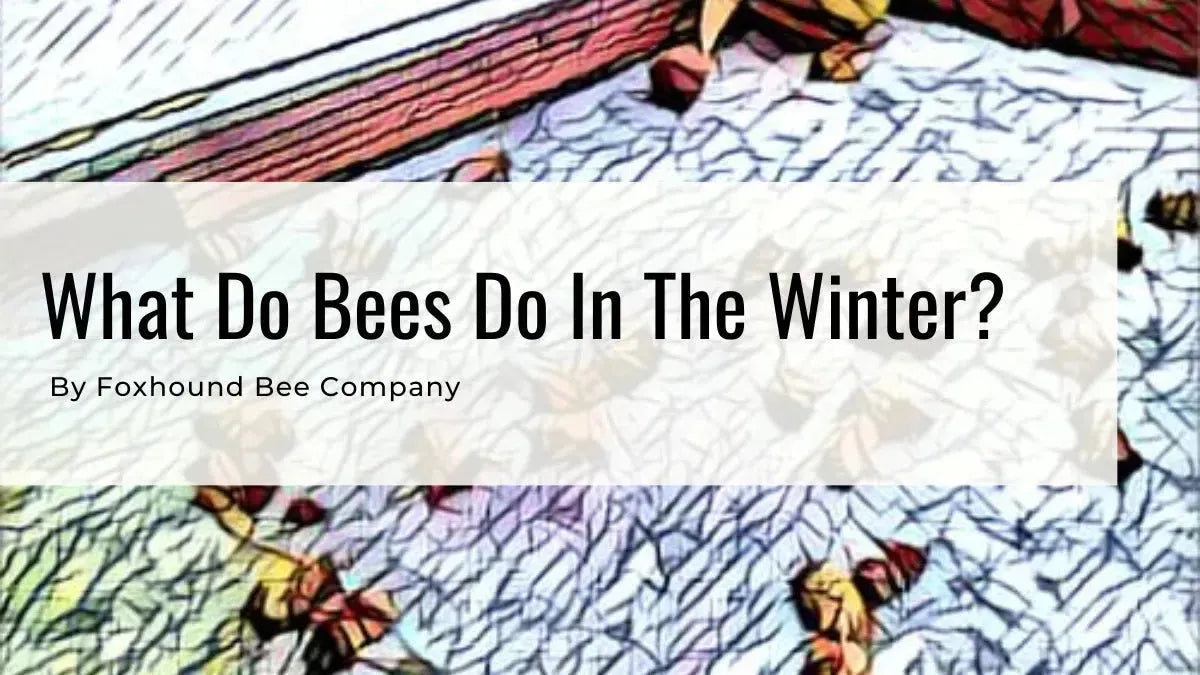

So what happens to honey bees in the winter? Bees pretty much disappear from the flowers and our minds as well, not to be thought of until pollen and flowers are abundant again. The easiest way to describe what happens to bees is that they hibernate. They don’t hibernate like a grizzly bear does, but they do hunker down. The queen bee stops laying eggs in late fall and early winter due to limited food availability.
By the time winter is here, the population of bees in every hive has dropped significantly. The population can drop from 60,000 in the early summer to less than 10,000 in the middle of winter. The main reason for the drop in population is it takes too much honey to feed 60,000 bees when it’s too cold to fly and nothing is blooming.
Honey bees survive winter by clustering for warmth, consuming stored honey, and reducing colony size to conserve resources, ensuring the queen's safety.
Bees rely on honey for energy, regulate hive temperature by shivering, and benefit from beekeeper management, including insulation and supplemental feeding.
Winter hive checks, using tools like FLIR cameras, help monitor bee health without disturbing clusters, aiding survival and spring readiness.
Bees must stay warm and have sufficient food to survive the winter. Less mouths to feed means the honey already made by the bees can last longer.
To survive the cold, bees keep warm by clustering together and consuming honey and bee bread. This clustering helps maintain the hive’s internal temperature and keeps the queen safe.
Before and during winter, certain bees are responsible for carrying dead bees out of the hive. You can typically see the dead bees littered outside the entrance.

BEE ACTIVITY DURING WINTER
Turns out, honey bees don’t make all their honey for us to eat. They make it to eat during winter when nothing is blooming.
During the winter, bees don’t leave the hive unless the temperature is around 50° or warmer.
Honey bees survive the harsh winter conditions by clustering together to generate heat and protect the queen. On most cold days and nights, as temperatures fall, bees spend their time in what beekeepers call a cluster.
The cluster is when all the bees gather together to form a warm ball around the queen and any eggs she lays. They do this because they want to keep the queen and the eggs warm.
If either gets too cold, they lose functionality and quickly die. The queen begins laying eggs again in late winter to ensure a healthy population for the spring season.

The view from the bottom of a hive, looking at a winter cluster
THERMOREGULATION IN THE HIVE
Honey bees (Apis mellifera) have a remarkable ability to regulate their body temperature, which is essential for surviving the harsh winter months. This process, known as thermoregulation, is vital for the colony’s survival. As temperatures fall, worker bees gather in a tight cluster around the queen, sharing body heat to maintain a stable temperature within the hive. This clustering behavior, combined with the hive’s natural insulation, helps conserve energy and keep the colony warm.
When the temperature drops, the bees on the outer edges of the cluster begin to shiver, generating heat through muscle contractions. This heat is then transferred to the bees in the center of the cluster, where the queen resides. The center of the cluster is typically the warmest, with temperatures ranging from 80°F to 90°F (27°C to 32°C). This thermoregulation process allows the colony to conserve energy and survive the winter months, even in freezing conditions .
THE IMPORTANCE OF HONEY FOR WINTER SURVIVAL
Honey is a crucial component of a honey bee colony’s winter survival strategy. During the summer and fall, worker bees diligently collect nectar and convert it into honey, storing it in the hive’s honeycomb cells.
This honey serves as a vital source of energy for the colony during the winter months when foraging is not possible. A strong colony can store up to 100 pounds (45 kg) of honey, which is used to sustain the bees throughout the winter.
The honey is consumed by the bees to generate heat and energy, allowing them to maintain the colony’s temperature and survive the cold winter months. Without sufficient honey stores, a colony may not survive the winter, making honey production a critical aspect of a beekeeper’s management strategy.

IMPACT OF BEEKEEPER MANAGEMENT ON HONEY BEE SURVIVAL
Beekeeper management plays a crucial role in the survival of honey bee colonies during the winter months. Beekeepers can take several steps to ensure the colony has sufficient honey stores to survive the winter. This includes monitoring the colony’s honey stores, providing supplemental feeding if necessary, and ensuring the hive is well-insulated and protected from harsh weather conditions.
Beekeepers can also help promote the colony’s thermoregulation process by ensuring the hive is properly ventilated and that the bees have access to a consistent source of water. Additionally, beekeepers can help reduce the colony’s energy expenditure by minimizing disturbances to the hive and avoiding unnecessary inspections during the winter months.
By taking these steps, beekeepers can help ensure the survival of their honey bee colonies during the winter months, allowing them to thrive and produce honey for years to come.
SAFELY WATCH THE HIVE DURING WINTER






